Container strawberry gardening transforms small spaces into lush, productive areas, offering both aesthetic appeal and bountiful harvests. From repurposed materials like pallets, gutters, and tires to purpose-built pots with side pockets, these planters maximize vertical and horizontal space for growing strawberries even in limited quarters. Strategies such as self-watering systems, straw bale beds, and hydroponic towers ensure consistent moisture and nutrient delivery, while creative containers—from teacups to mason jars—add unique charm. Many designs encourage easy picking at waist height, reducing strain and deterring pests by keeping fruit off the ground. Whether you’re a beginner or seasoned gardener, these 20 ideas blend functionality and style to help you enjoy homegrown strawberries all season long.
1. Vertical Pallet Planter

A vertical pallet planter repurposes an old wooden pallet into a multi-tiered strawberry garden by attaching landscape fabric to the back and filling the horizontal slats with potting mix. This design excels at maximizing narrow wall or fence space, allowing dozens of plants to grow upward instead of outward. The slatted structure promotes excellent drainage and airflow, reducing disease risk. With regular watering from top to bottom, gravity helps distribute moisture across all levels. Mount the pallet on a sturdy frame or directly to a wall for easy access to ripe berries. Ideal for balconies and small patios, this planter offers both a rustic aesthetic and efficient use of vertical real estate.
2. Terra-Cotta Strawberry Pot with Pockets
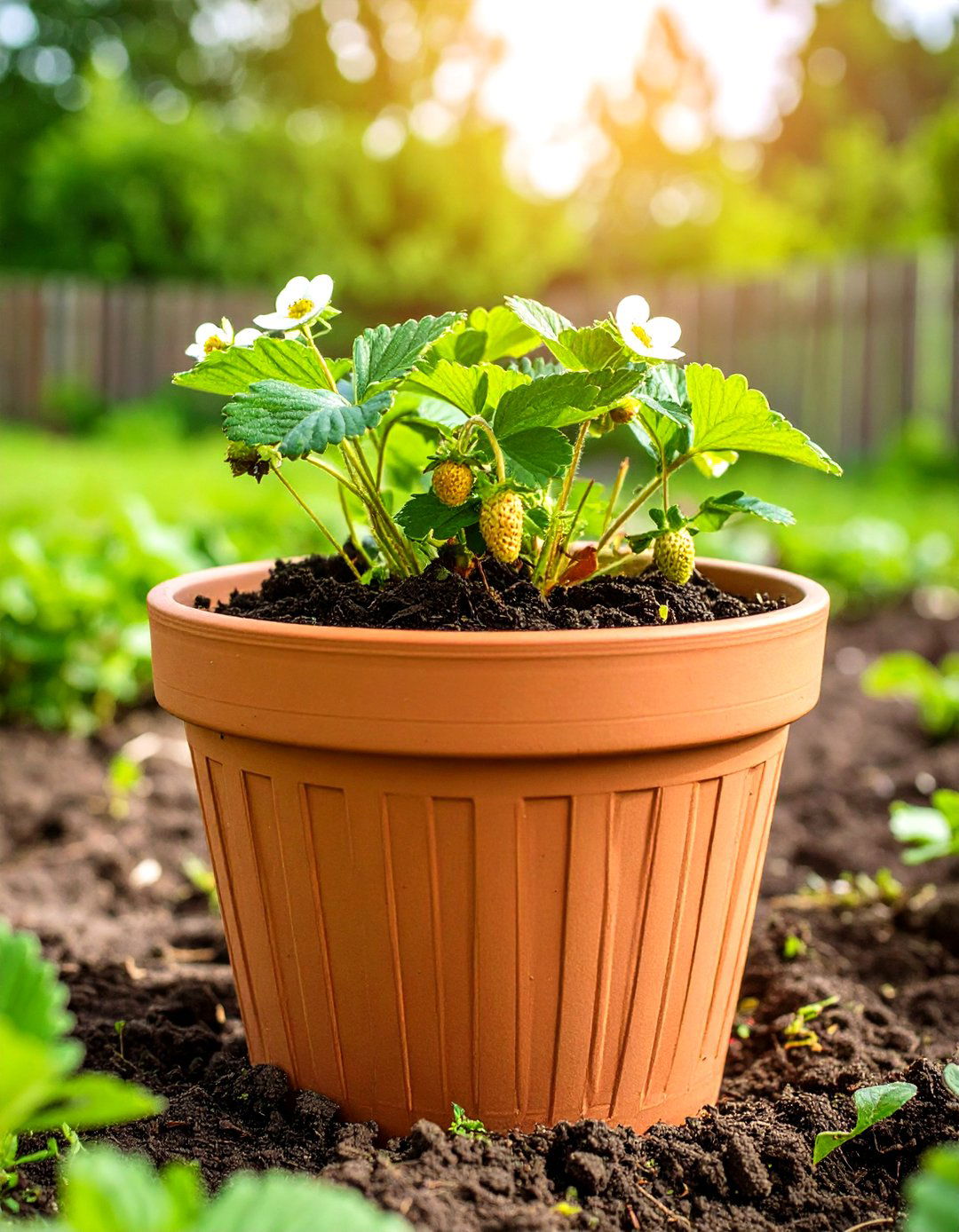
Terra-cotta strawberry pots feature built-in side pockets that cradle individual plants, providing a decorative yet functional container. Use potting mix rather than garden soil to ensure even drainage and prevent compaction around roots. Fill each pocket sequentially, topping up with soil until the rim, then plant the central cavity with a larger strawberry cultivar. The porous clay walls moderate moisture levels, reducing overwatering, while the stacked pockets create a cascading waterfall of foliage and fruit. Group several pots for an eye-catching centerpiece on a sunny patio. Periodic feeding with slow-release fertilizer keeps plants vigorous and productive throughout the season.
3. Tiered Wooden Crate Planter
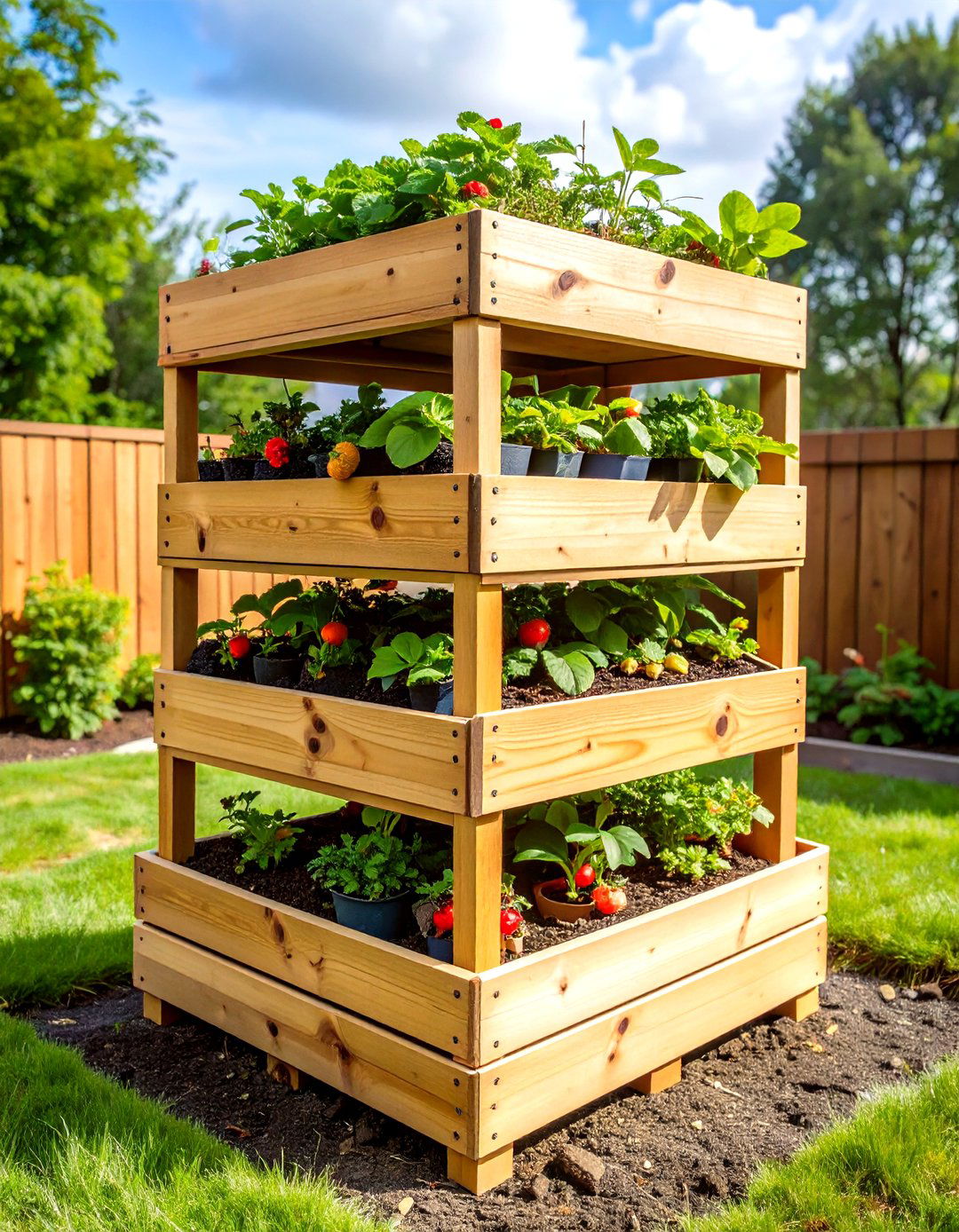
Stacked wooden crates arranged in a tiered formation offer a charming, modular approach to strawberry cultivation. Secure crates with screws or brackets, offsetting each level slightly inward to create shelves for planting. Line each crate with landscape fabric to retain soil, then fill with a lightweight potting medium. This design facilitates easy harvest, as berries hang over each tier’s edge, and can be expanded vertically by adding more crates. The pallets can be stained or painted to match outdoor décor, while removable crates simplify off-season storage or reconfiguration. Drainage holes in the base of each crate prevent waterlogging and root rot.
4. Hanging Basket Display

Hanging baskets transform overhead space into productive growing zones by suspending straw or wire-lined containers filled with potting mix and strawberry plants. Choose baskets at least 10–12 inches in diameter and depth to accommodate multiple crowns. Install self-watering inserts or layer moss under the soil to retain moisture. Position baskets in full sun, rotating occasionally for uniform ripening. The trailing habit of strawberry varieties creates a lush “green curtain” with berries dangling attractively below. This approach protects fruit from ground pests and offers easy access for watering and picking. Pair baskets with flowering annuals for a mixed, decorative display.
5. PVC Pipe Tower
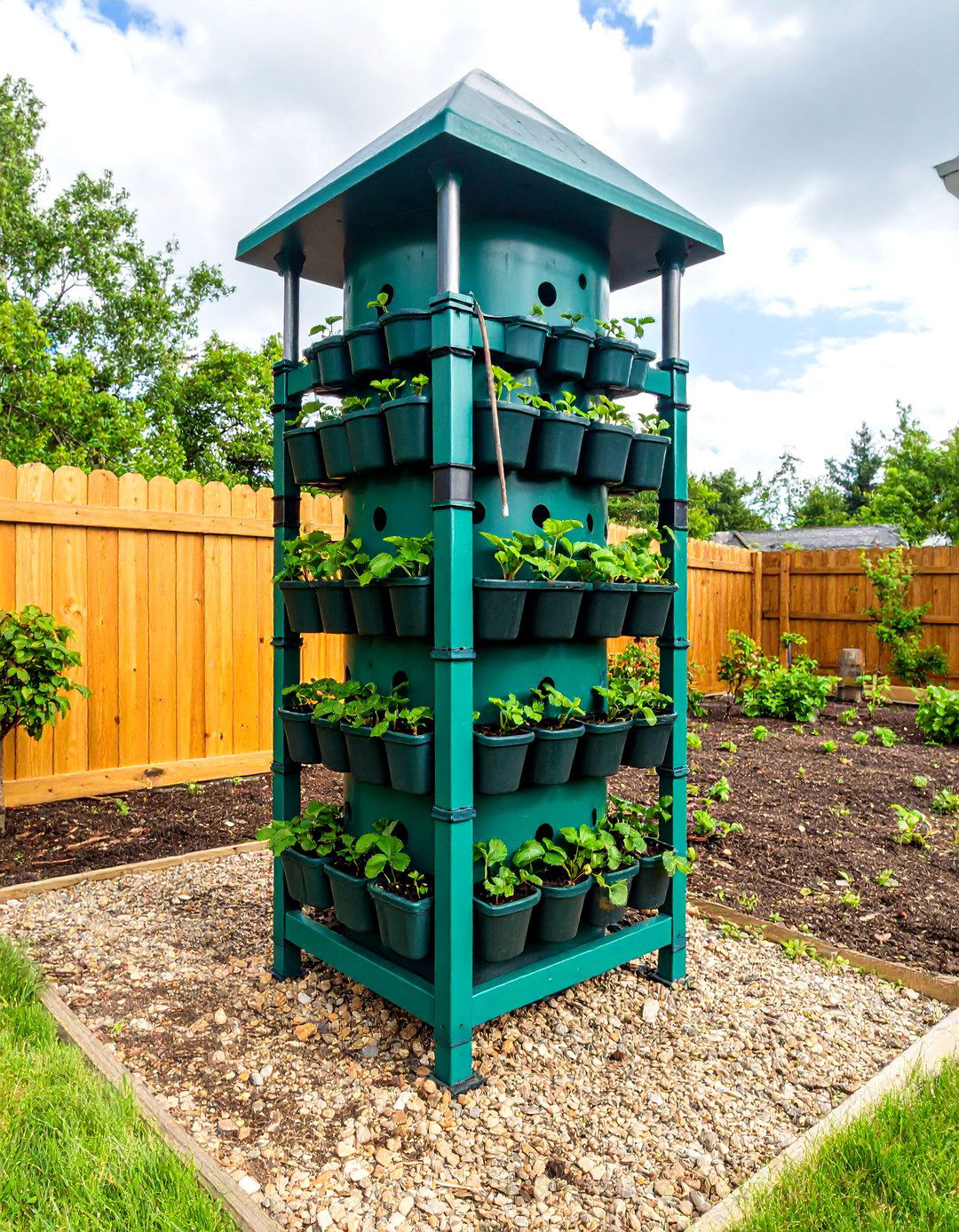
Construct a space-saving PVC pipe tower by drilling evenly spaced, 2- to 3-inch holes in the walls of a 4- to 6-inch diameter pipe. Stand the pipe on a drip tray, anchor it with gravel, and fill with potting mix. Insert strawberry seedlings into each hole, then water through the top, allowing moisture to trickle down evenly via gravity. This vertical column supports 10–15 plants in a footprint of only a few square feet. The smooth surface deters slugs, and integration with a drip irrigation system automates watering. Lightweight and portable, the tower suits balconies, decks, and greenhouse environments perfectly.
6. Repurposed Gutter Planters
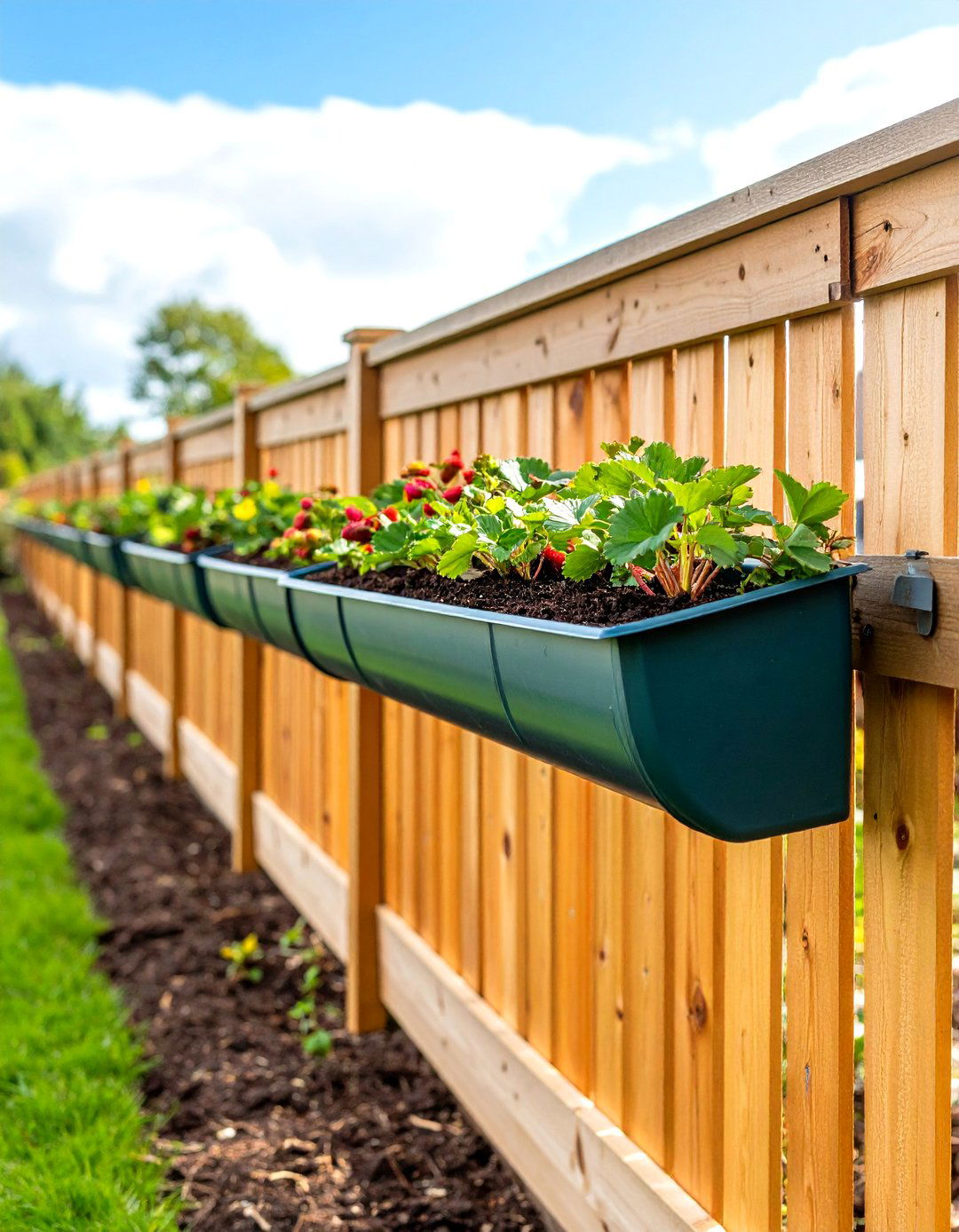
Old rain gutters can be repurposed into long, narrow strawberry planters by mounting sections on a fence or railing. Drill drainage holes along the bottom, fill with a well-draining potting blend, and space plants evenly. This linear setup accommodates several plants while creating a living green barrier or decorative railing garden. Gutters can be arranged at varying heights for a cascading effect. The shallow depth encourages root confinement, which can improve fruiting, and the elevated position reduces moisture competition from weeds. DIY kits with brackets make installation simple, and removable end caps facilitate seasonal cleaning.
7. Strawberry Barrel Planter
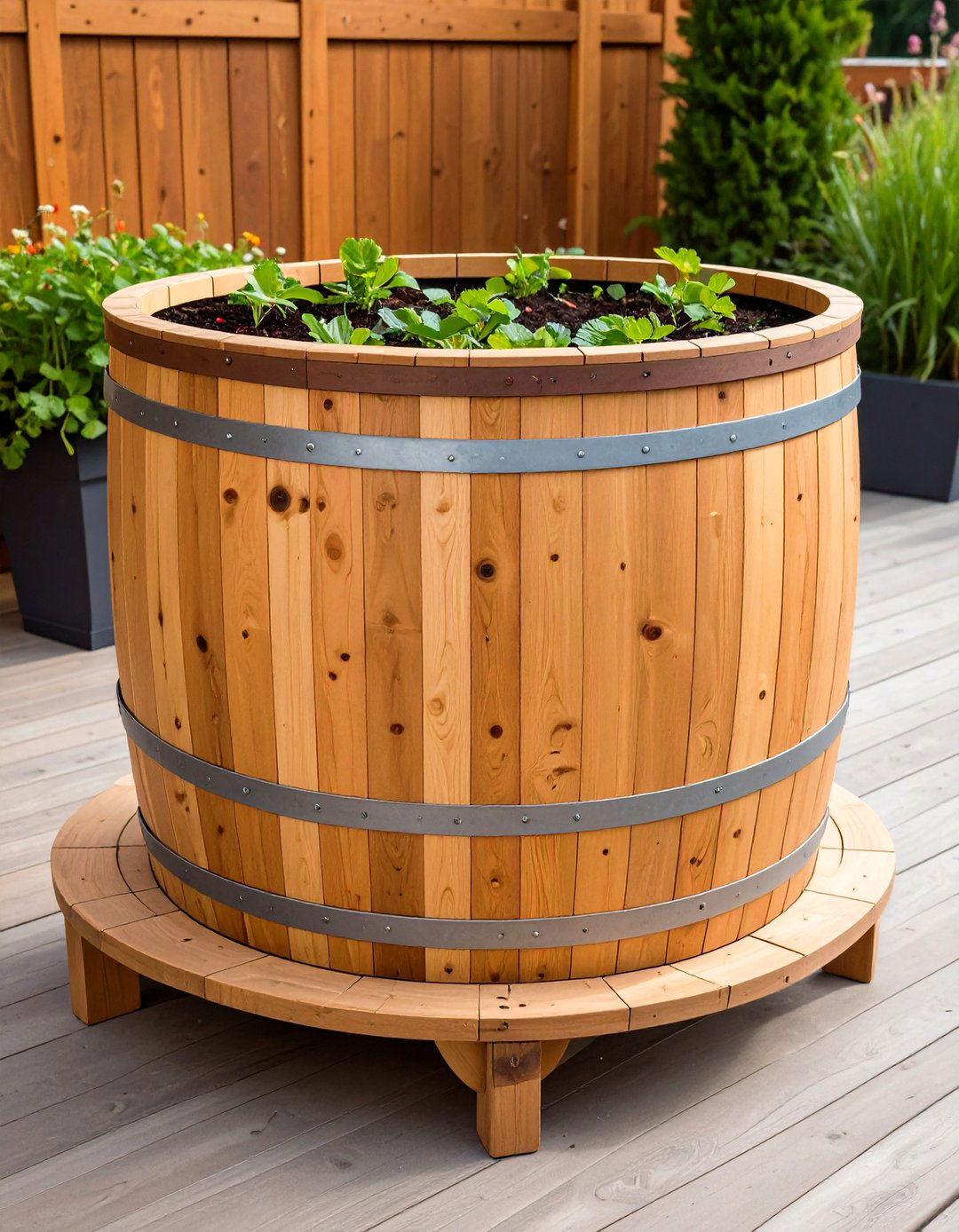
A classic strawberry barrel planter consists of a half-hoop barrel fitted with inner spacers to create concentric rings for planting. Drill holes along each ring, fill with soil, and nestle strawberry crowns into each level. The barrel’s rustic appearance complements cottage gardens and larger patios. Ample soil volume in the center ring sustains healthy root development, while side pockets increase yield. Elevation on a raised platform simplifies maintenance and harvest. Rotate rings annually to maintain soil fertility, and seal the barrel interior to extend its lifespan.
8. Upcycled Tire Planter
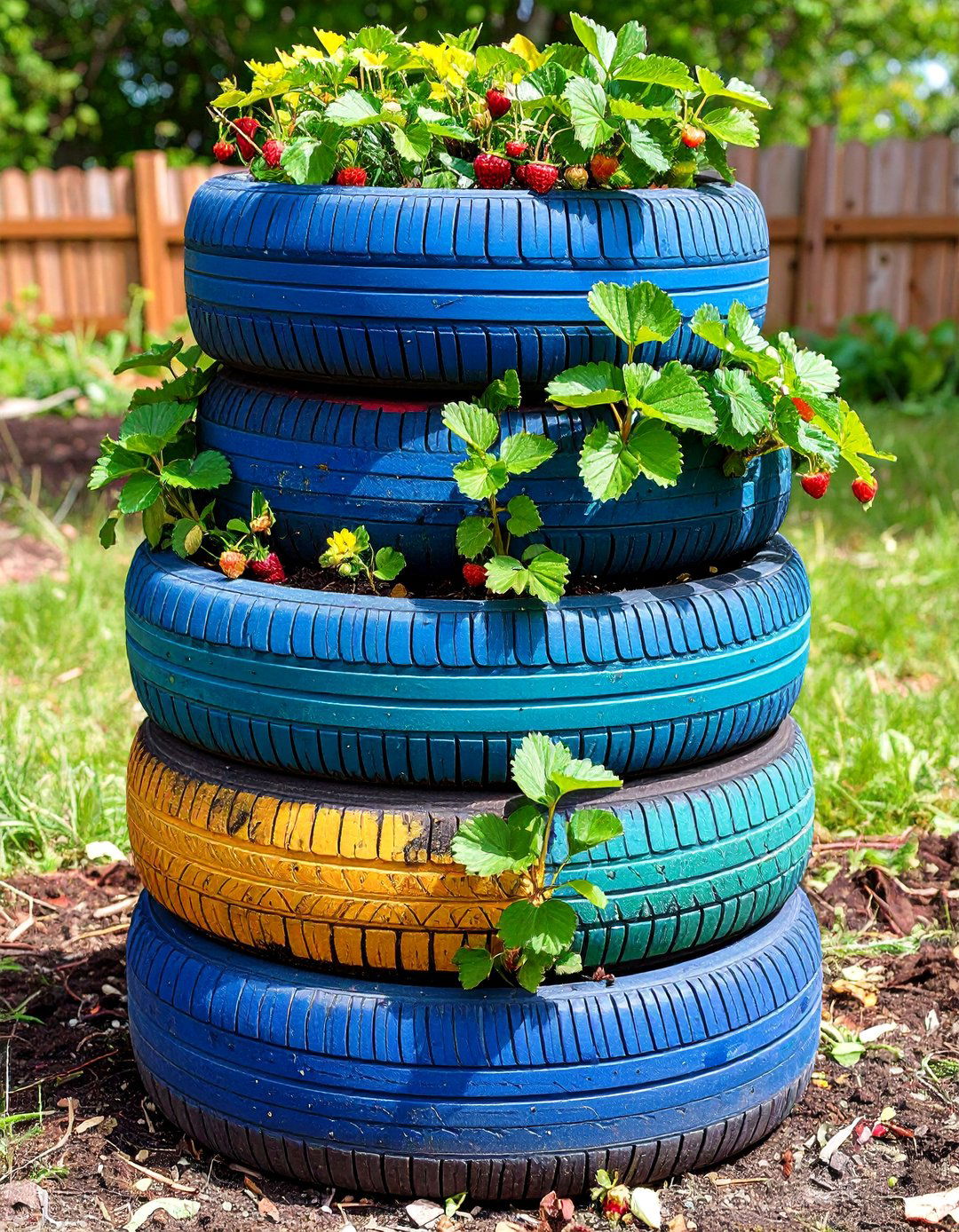
Transform an old tire into a durable strawberry planter by painting it for weather resistance and stacking multiple tires to form tiers. Line the interior with landscape fabric, fill with potting medium, and insert plants on the top and sides. The rubber walls retain warmth, accelerating growth, while the circular shape promotes water retention at the base. Painted tires add vibrant pops of color to gardens or patios. When frost threatens, stack tires to create insulated mini-greenhouses. This eco-friendly design reuses waste while offering a sturdy, movable container.
9. Mason Jar Hanging Planters
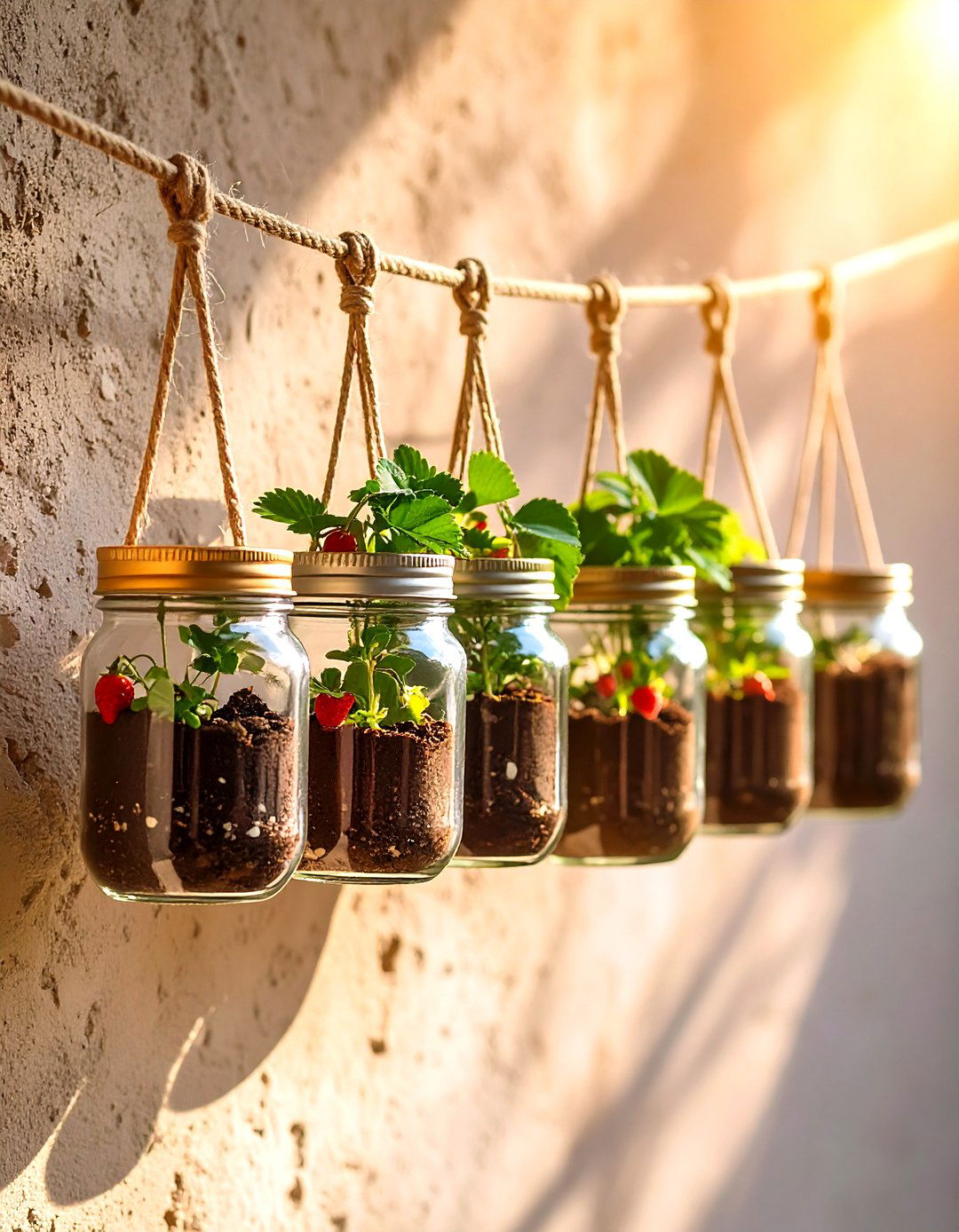
Mason jars make charming individual strawberry planters when suspended in macramé holders or mounted on a sunny wall. Drill a small hole in the lid for a wick or insert a narrow PVC watering tube, then fill jars with moist potting mix. Plant a single strawberry crown in each jar and water through the tube for consistent moisture. The transparent glass allows root monitoring, and grouping jars at varying heights creates a whimsical vertical display. This DIY project suits windowsills, balconies, and indoor sunrooms, offering both decorative appeal and fresh berries year-round.
10. Straw Bale Raised Planter
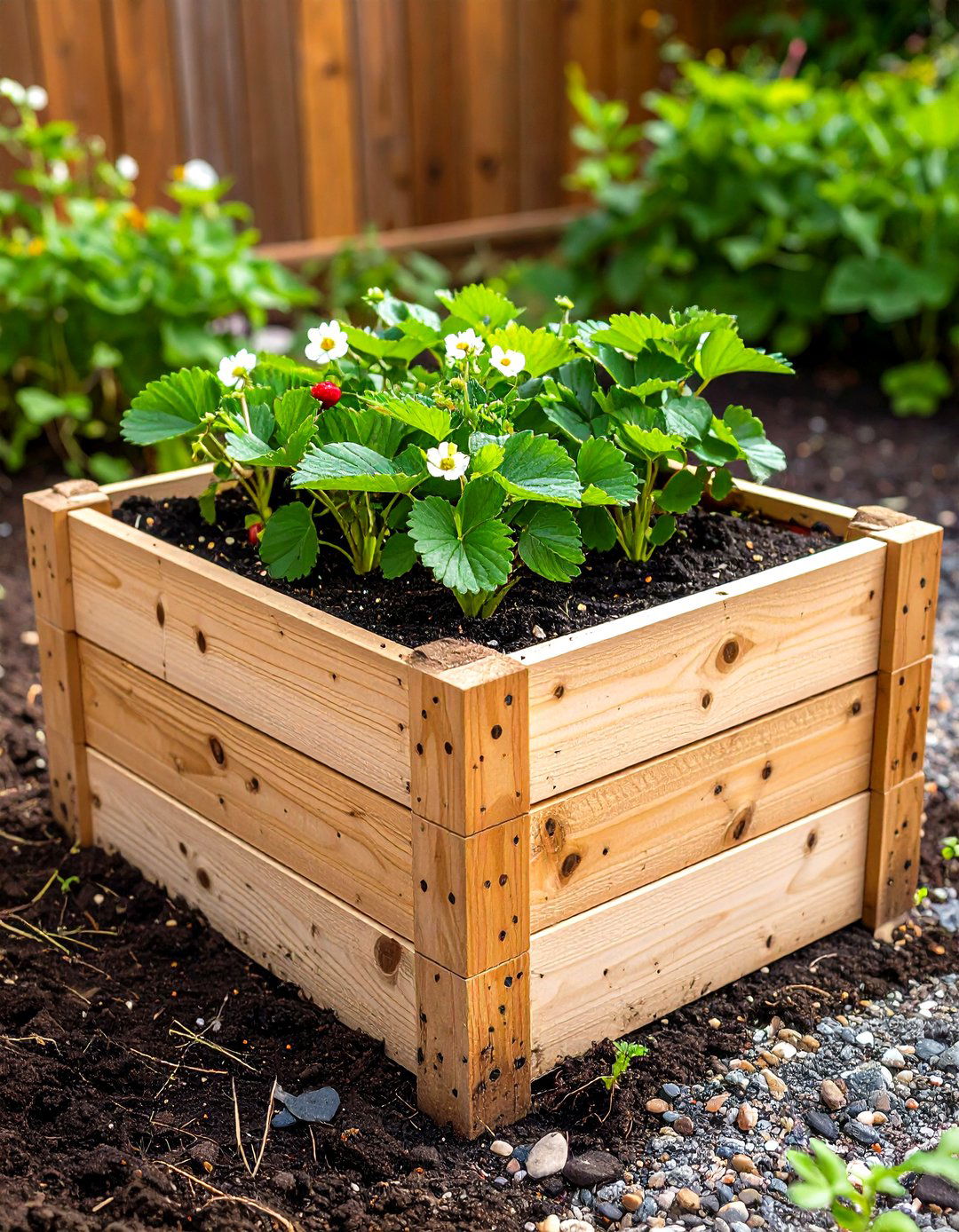
A straw bale raised planter uses compacted straw blocks arranged into a bed, then conditioned with fertilizer for about two weeks. The straw decomposes, generating heat and nutrients, and then host holes are carved into the top for strawberry plants. This method requires minimal soil, offers exceptional drainage, and warms roots early in spring. Bales can be reconfigured or expanded as needed, making it ideal for temporary or rotating garden plots. At season’s end, bales break down into compost, enriching beds for subsequent planting.
11. Woven Wicker Basket Planter
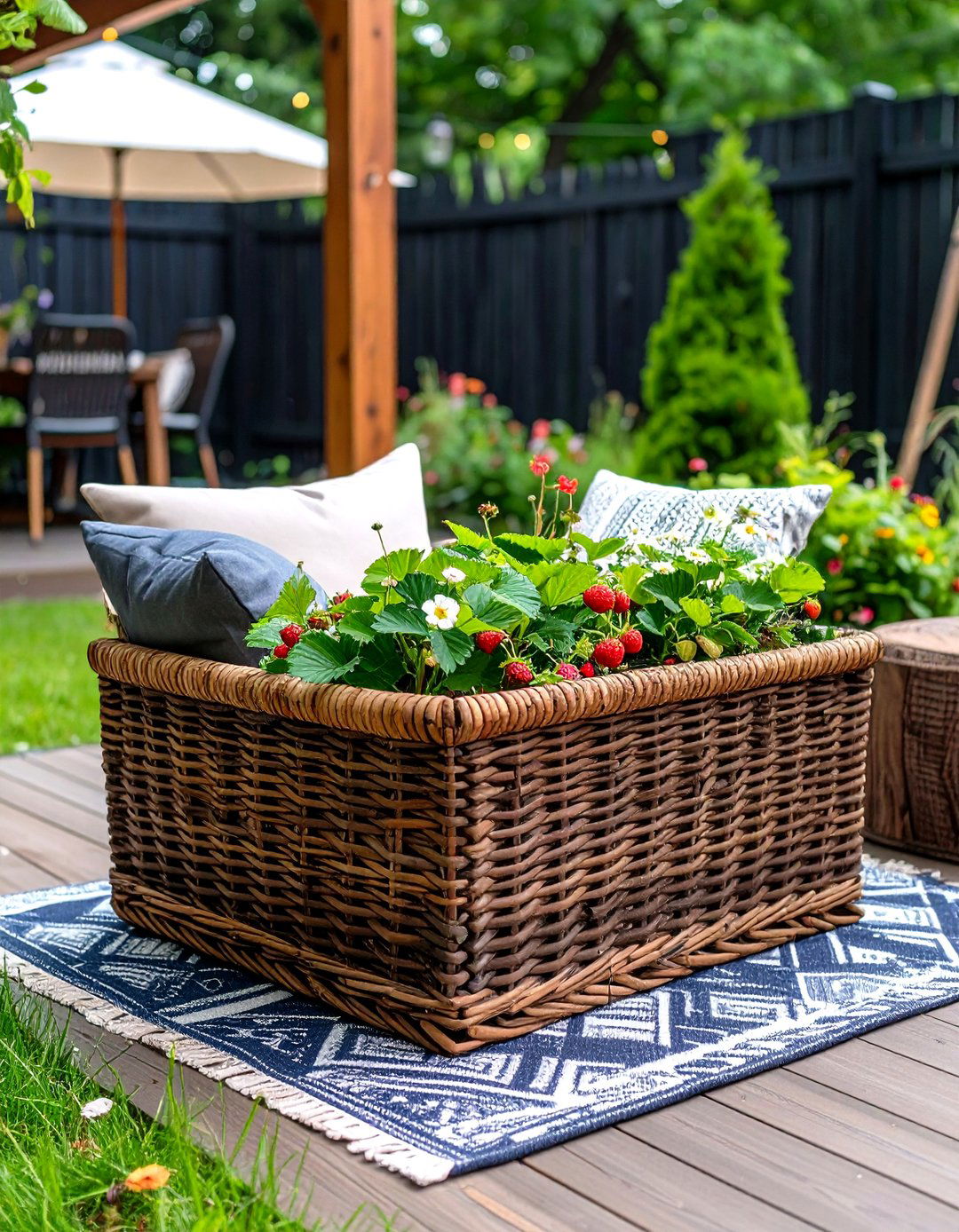
Line a sturdy wicker basket with landscape fabric and fill with potting soil to create a natural-looking strawberry planter. The breathable sides prevent waterlogging, while the fabric retains soil. Hang baskets or sit them on raised surfaces for a cottage-style display. The basket’s flexibility accommodates root expansion, and the rustic texture complements any outdoor décor. Rotate baskets seasonal-ly and refresh the soil annually to maintain fertility. Finished baskets are lightweight and portable, enabling easy relocation to optimize sun exposure or shelter during inclement weather.
12. DIY Concrete Strawberry Planter
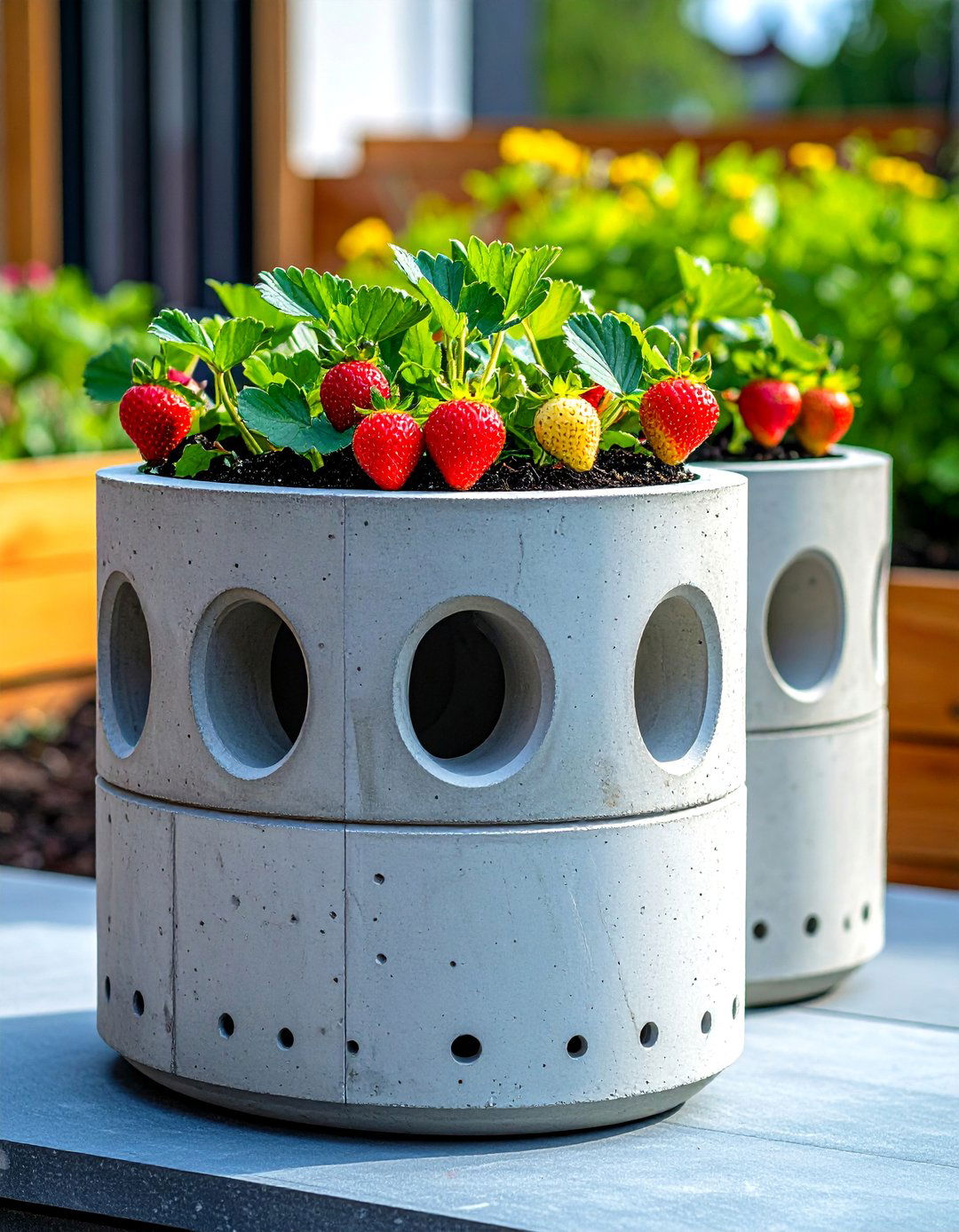
Cast a DIY concrete planter by creating a cylindrical mold lined with plastic, then pouring a mix of cement and sand. Once cured, remove the mold and drill pockets around the sides for planting. The sturdy structure resists weathering and adds a modern industrial flair. Concrete’s thermal mass moderates soil temperature, protecting roots in fluctuating climates. Seal the planter to prevent cracking and stain resistance. Position it on a sunny patio or near an entryway for eye-catching décor that doubles as food production.
13. Shoe Organizer Wall Planter
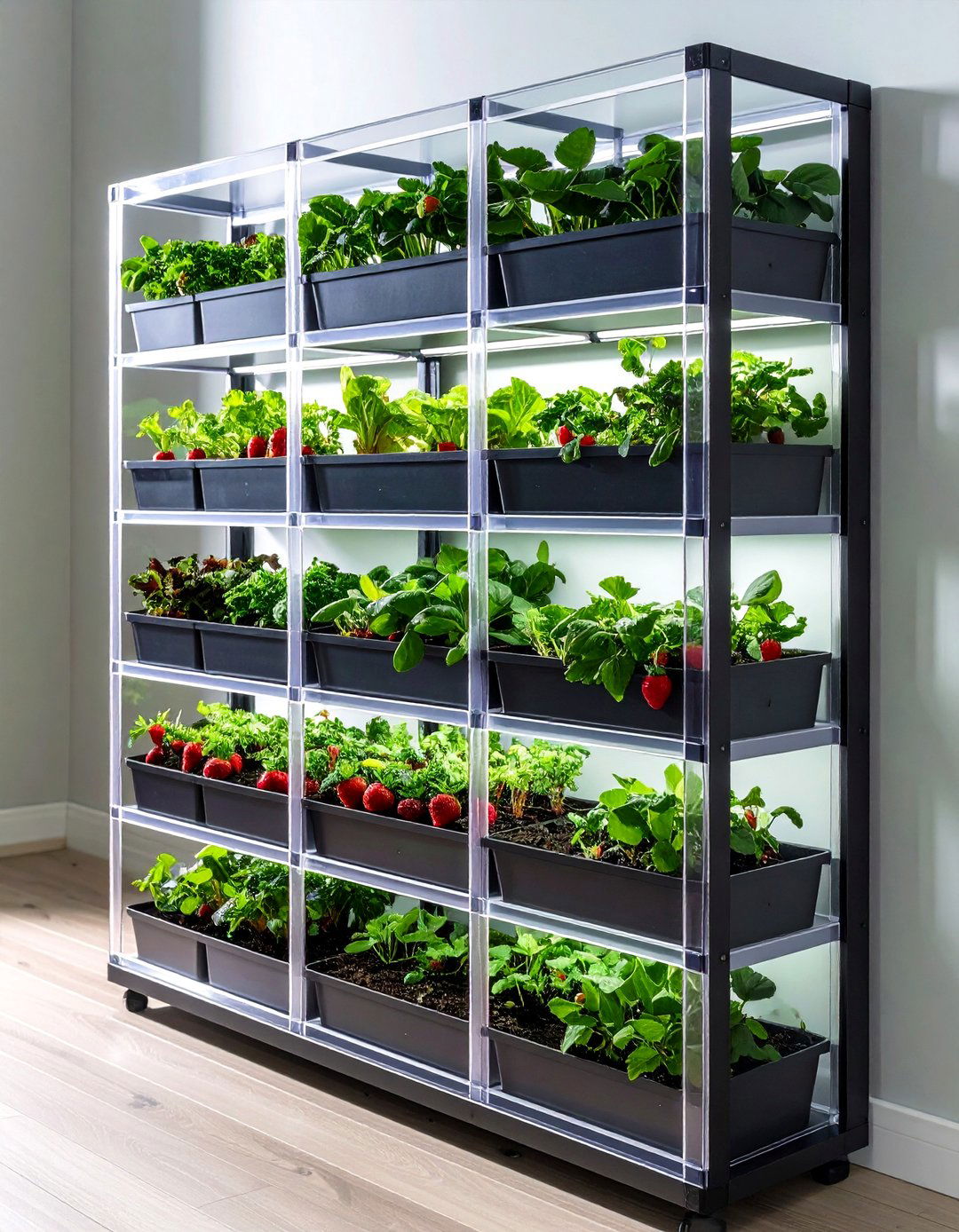
Hang a clear plastic shoe organizer on a sturdy wall or fence, then fill each pocket with a small amount of potting mix and one strawberry plant. The transparent pockets allow easy moisture checks, and the vertical arrangement saves significant floor space. Install a drip irrigation tube along the top row to water all pockets simultaneously. This upcycled solution is budget-friendly and ideal for renters or temporary gardens, as the organizer can be removed without permanent alterations. Replace fabric organizers with waterproof liners for longevity.
14. Self-Watering Container

Construct a self-watering strawberry planter by combining two pots—a larger reservoir pot and an inner planting pot with wicking strips at the base. Fill the reservoir with water, while the inner pot draws moisture upward through the wicks. This design maintains consistent soil moisture, reduces watering frequency, and prevents overwatering. Incorporate a water-level indicator to monitor reservoir capacity. Ideal for hot climates or forgetful gardeners, self-watering containers support vigorous growth and extended harvests with minimal maintenance.
15. Teacup Succulent Strawberry Planter
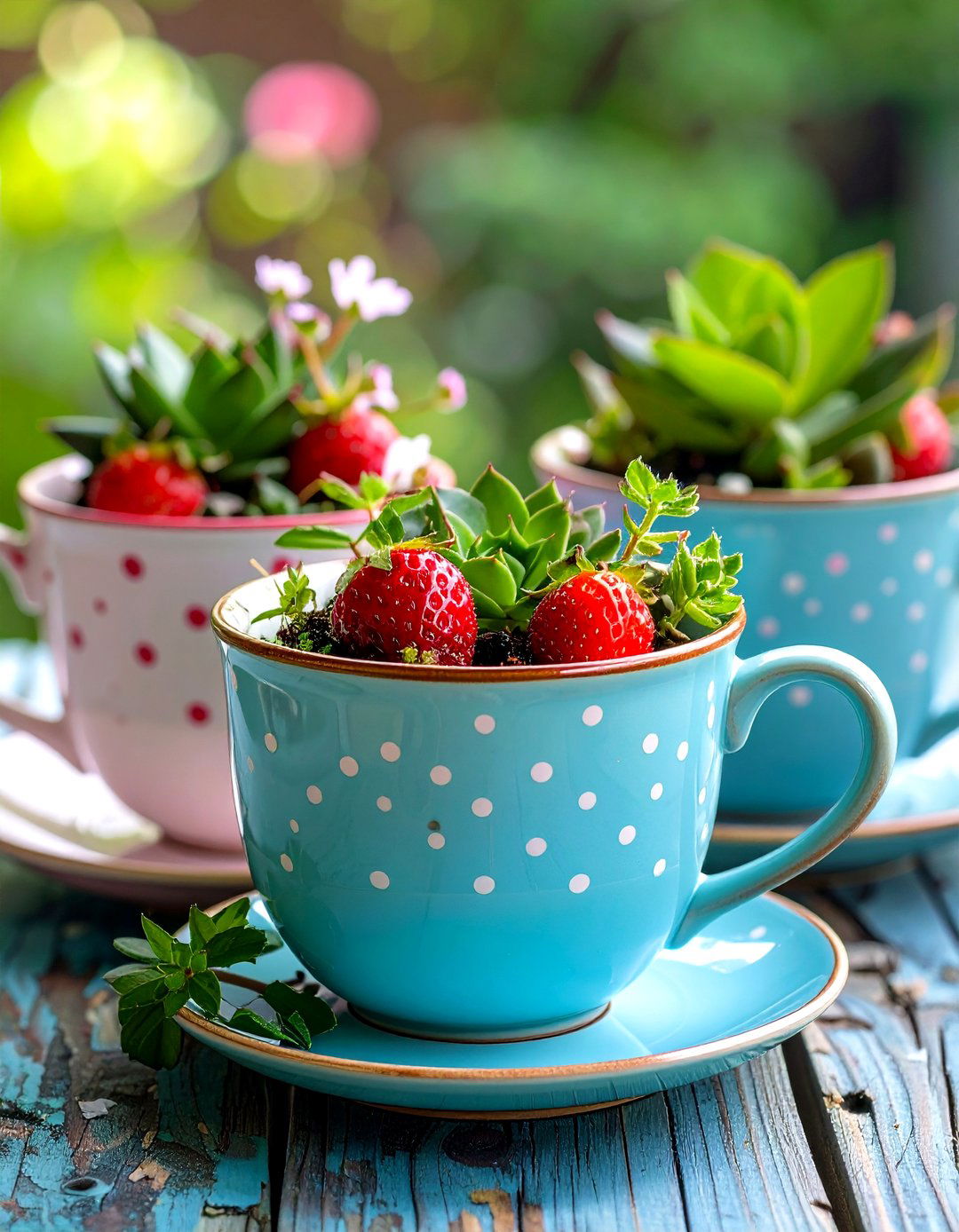
Create a whimsical teacup strawberry planter by drilling drainage holes in a vintage teacup and saucer, then filling with a succulent-friendly mix amended for moisture retention. Plant a small strawberry crown alongside drought-tolerant succulents or moss for a mixed display. The shallow depth suits varieties like alpine strawberries that thrive in tight quarters. Place teacups on a sunny windowsill or as tabletop décor. These miniature planters make charming gifts and conversation pieces, combining edible fruit with ornamental appeal.
16. Wooden Strawberry Tower
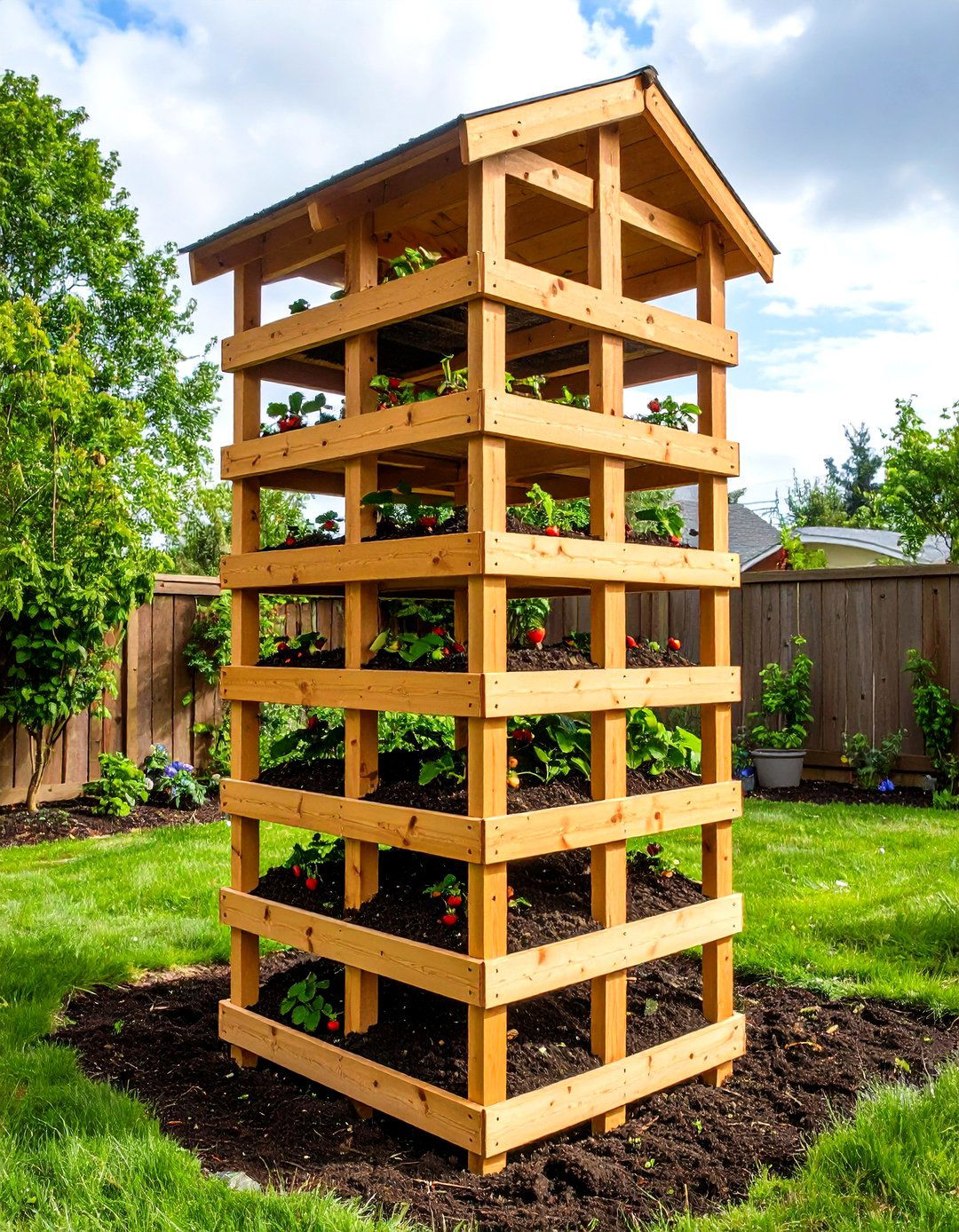
Build a wooden strawberry tower by stacking circular or square wooden tiers that decrease in diameter, creating a tapered column. Line each layer with landscape fabric and fill with potting mix. Plant strawberry crowns in pre-drilled holes around each tier. The wrap-around design maximizes planting area, and the wood’s natural insulation protects roots. Stain or paint the tower to match garden aesthetics, and anchor it securely to prevent tipping. This versatile planter can also accommodate herbs or flowers in alternate seasons.
17. Wall-Mounted Wooden Boxes

Mount several shallow wooden boxes or planters on a sunny exterior wall to form a living strawberry mural. Securely fasten with heavy-duty brackets, line the bottom of each box with drainage fabric, and fill with potting mix. Space strawberry plants evenly for uniform coverage. This bold, artful installation transforms blank walls into edible landscapes, offering easy harvesting at eye level. Annual rotation and soil refresh keep plants healthy, while painted or stained boxes harmonize with architectural elements.
18. Repurposed Drawer Planter

Convert an old wooden drawer into a rustic strawberry planter by sealing the interior with pond liner or landscape fabric and drilling drainage holes. Attach decorative drawer pulls to the front for character. Fill with lightweight mix and plant rows of strawberries. Place the drawer on a deck or brick surface to catch spills, or mount on a fence for a floating garden look. This upcycled planter highlights vintage charm while supporting productive berry growth.
19. Hydroponic Strawberry Tower
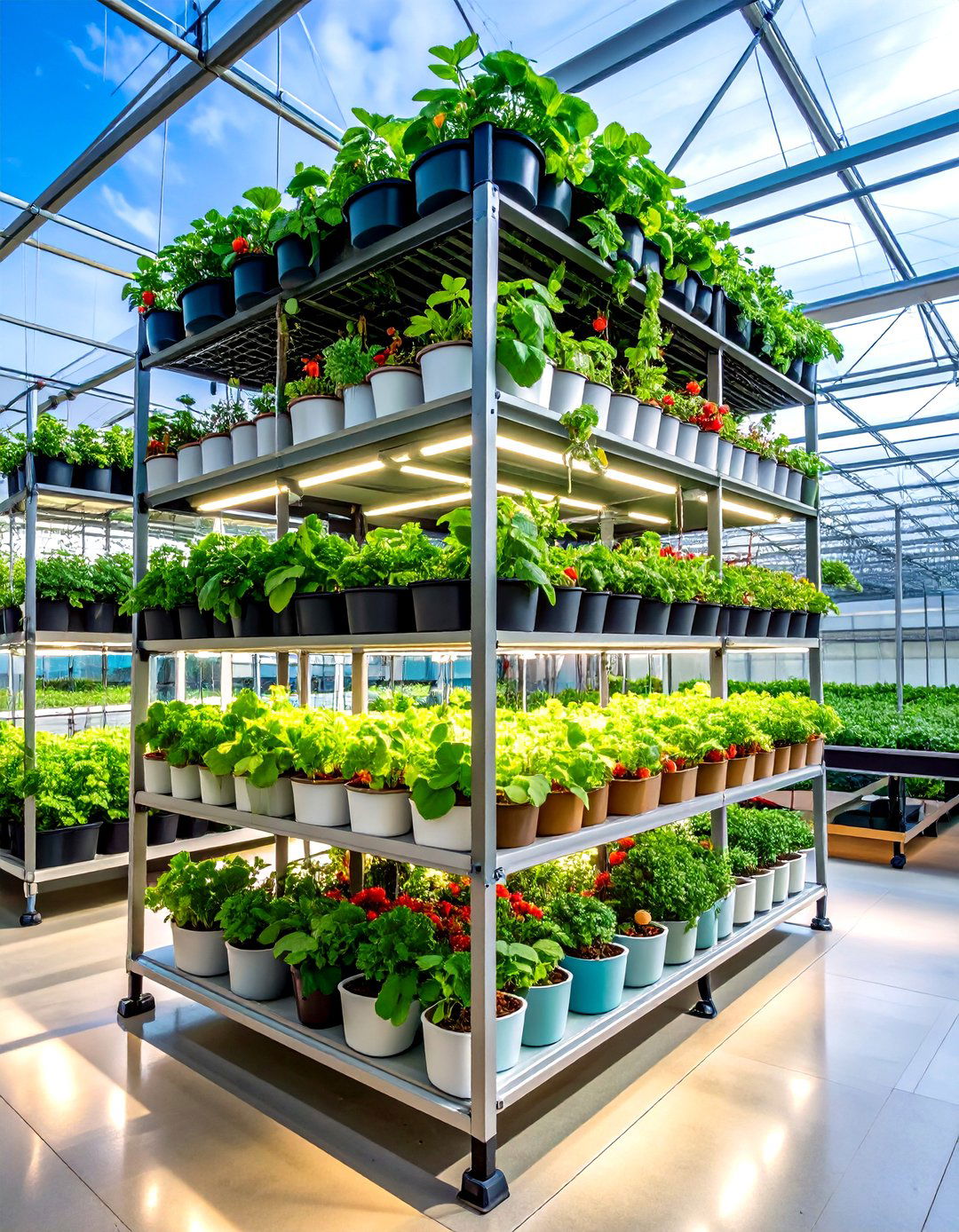
Assemble a hydroponic tower system using stacked net pots, a water reservoir, and a small submersible pump on a drip or nutrient film technique cycle. Grow strawberries in inert media such as coco coir, with nutrient solution circulated automatically. This soil-free method accelerates growth, reduces pests, and allows year-round production in greenhouses or indoors. Monitor pH and EC levels for optimal yields. While requiring upfront investment, hydroponic towers deliver high-density planting and unparalleled water efficiency.
20. Combination Herb-Strawberry Planter
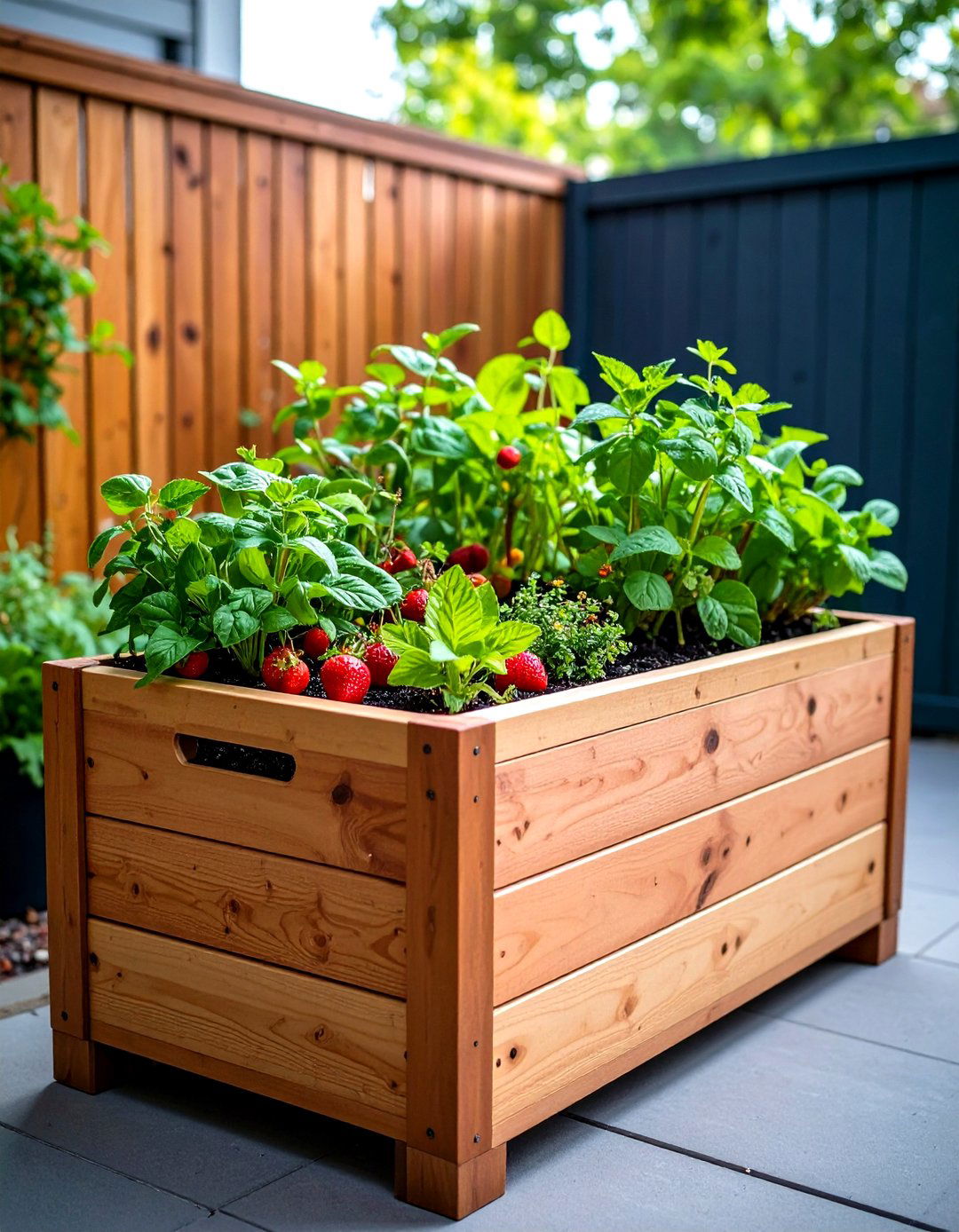
Maximize flavor variety by planting strawberries alongside companion herbs like basil, chives, or mint in a single container. Use a large pot divided into sections or a multi-pocket strawberry pot. Herbs occupy sunny, drier pockets, while strawberries thrive in moist central areas. This mixed container deters pests—mint repels slugs—and creates a dynamic culinary garden at your fingertips. Harvest herbs and berries together for fresh salads, desserts, and beverages. Companion planting also enhances pollination and overall plant health.
Conclusion:
From vertical towers and repurposed materials to self-watering containers and hydroponic systems, these 20 strawberry planter ideas demonstrate the versatility of container gardening. Each design addresses specific challenges—space constraints, moisture management, or ease of harvest—while adding decorative interest to any environment. By choosing the right planter for your setting and maintaining proper watering, fertilization, and sun exposure, you can enjoy fresh, homegrown strawberries throughout the growing season. Experiment with different styles and companion plantings to discover what works best for your garden, and relish the satisfaction of harvesting sweet berries from your own creative planter.




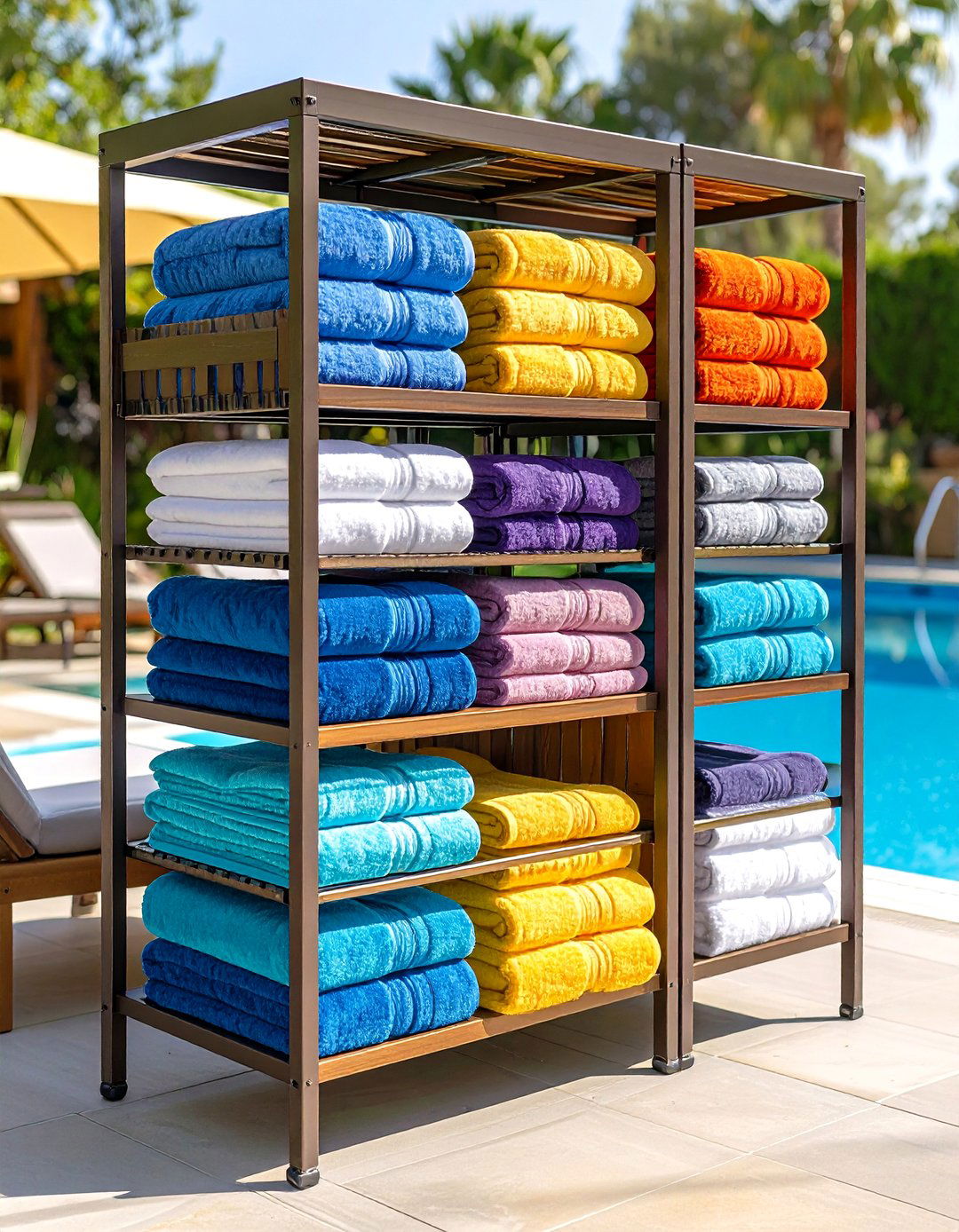
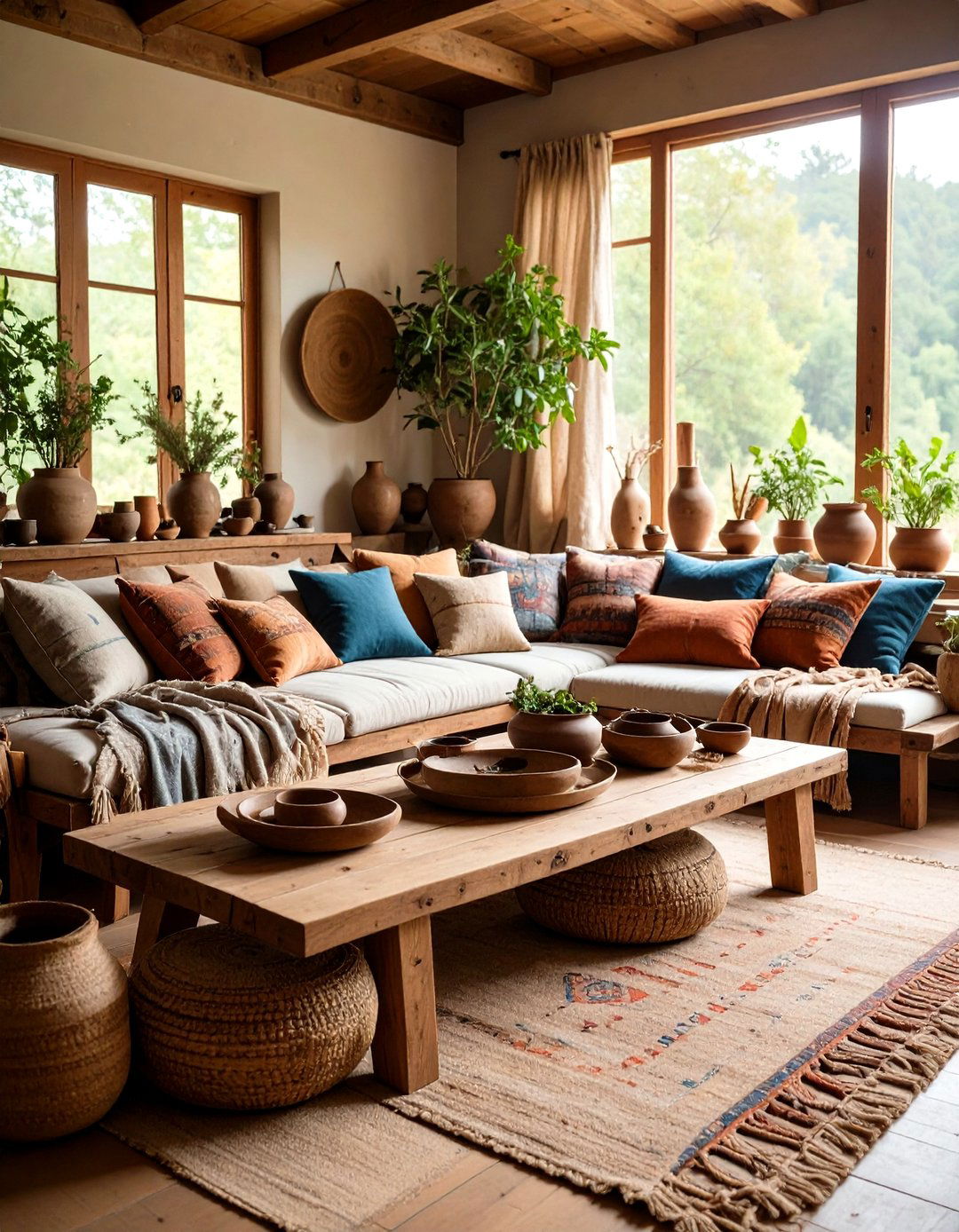
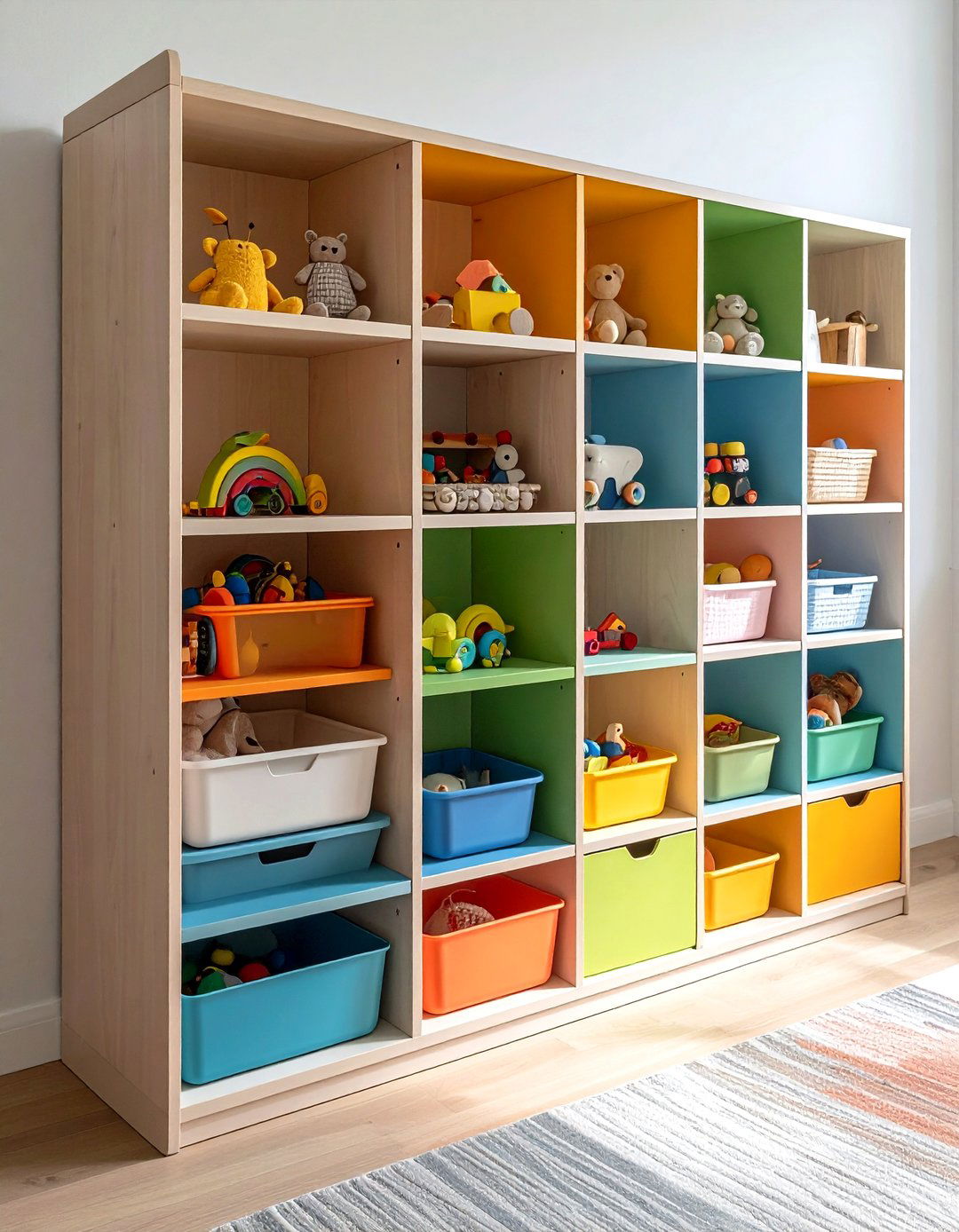
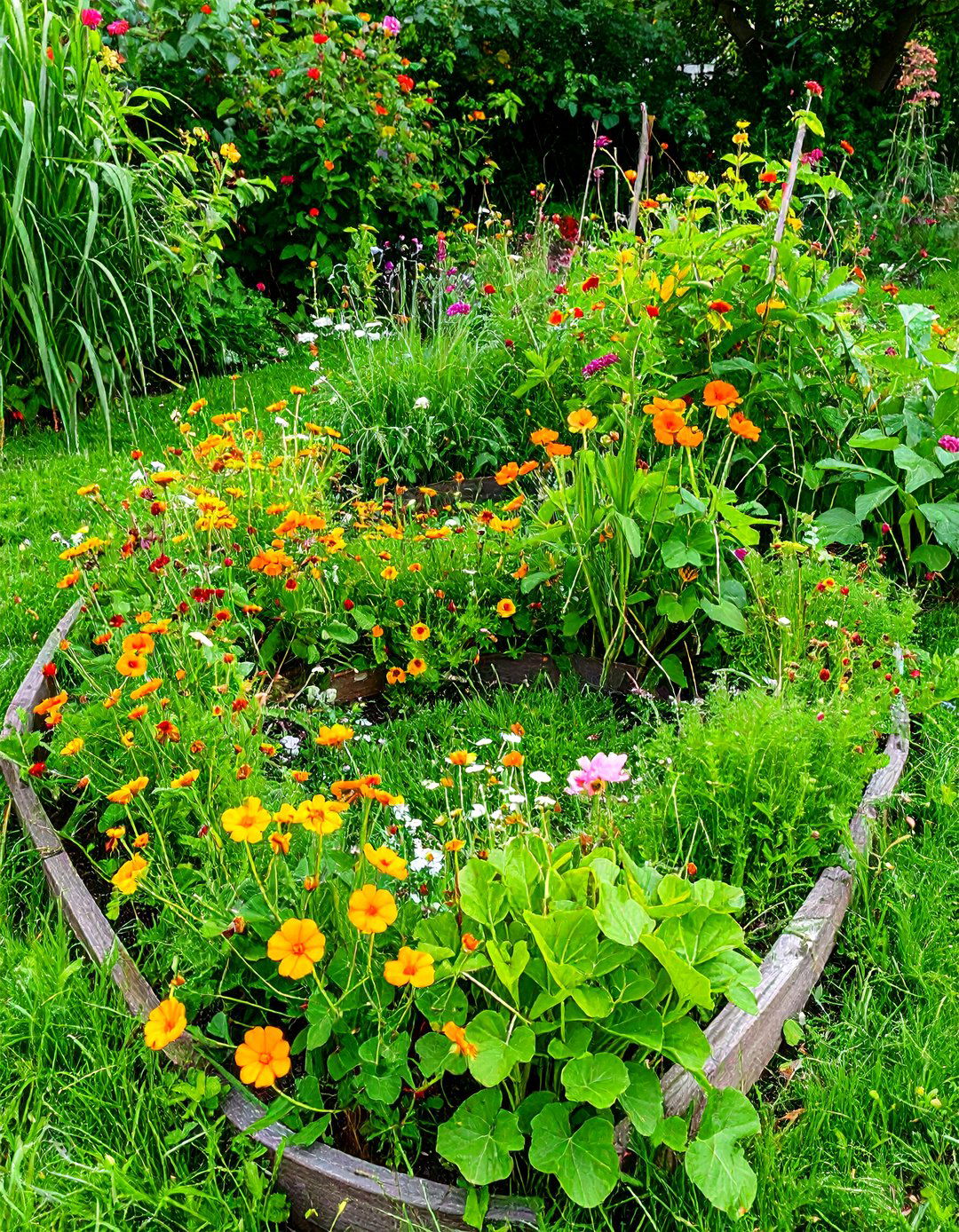
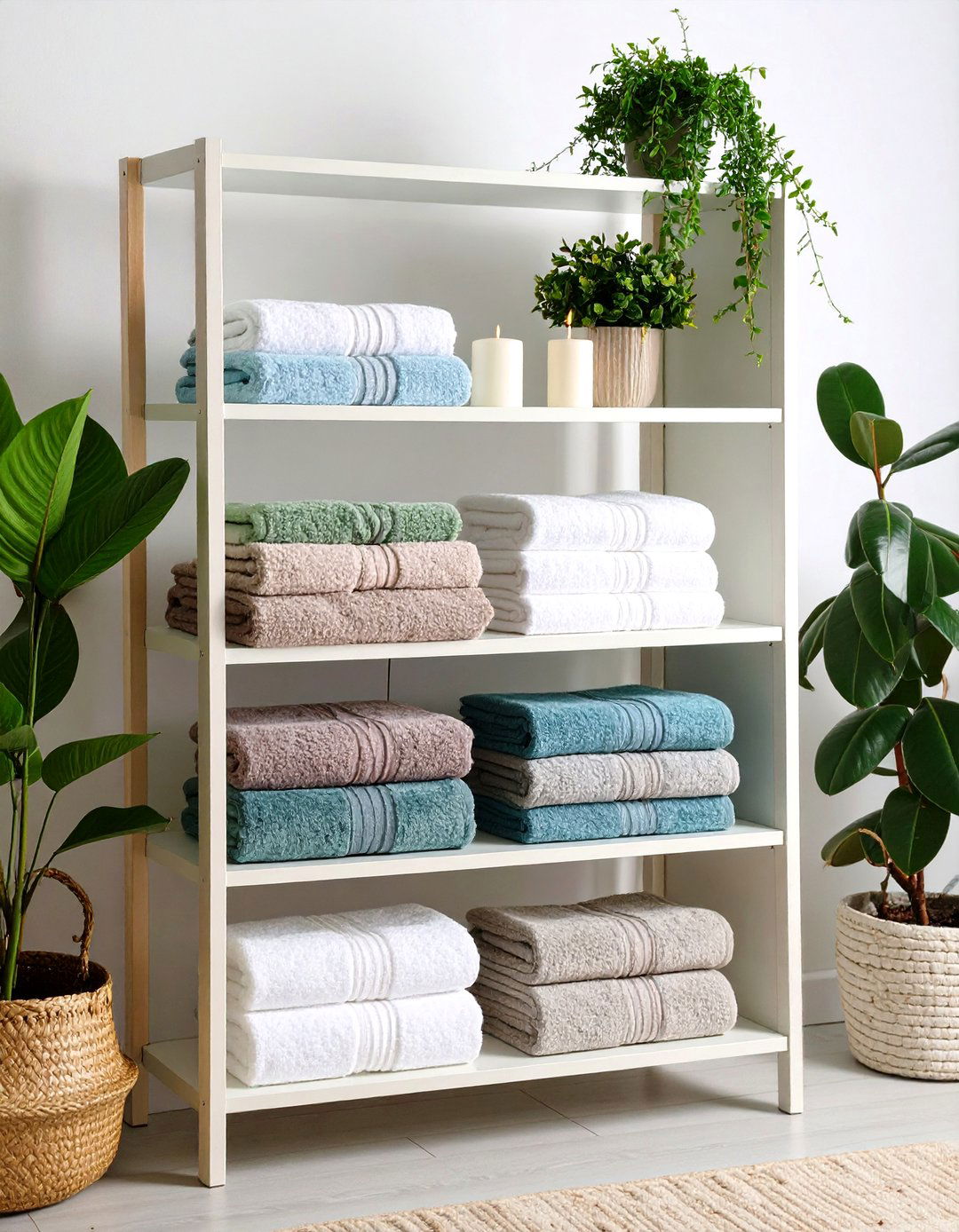
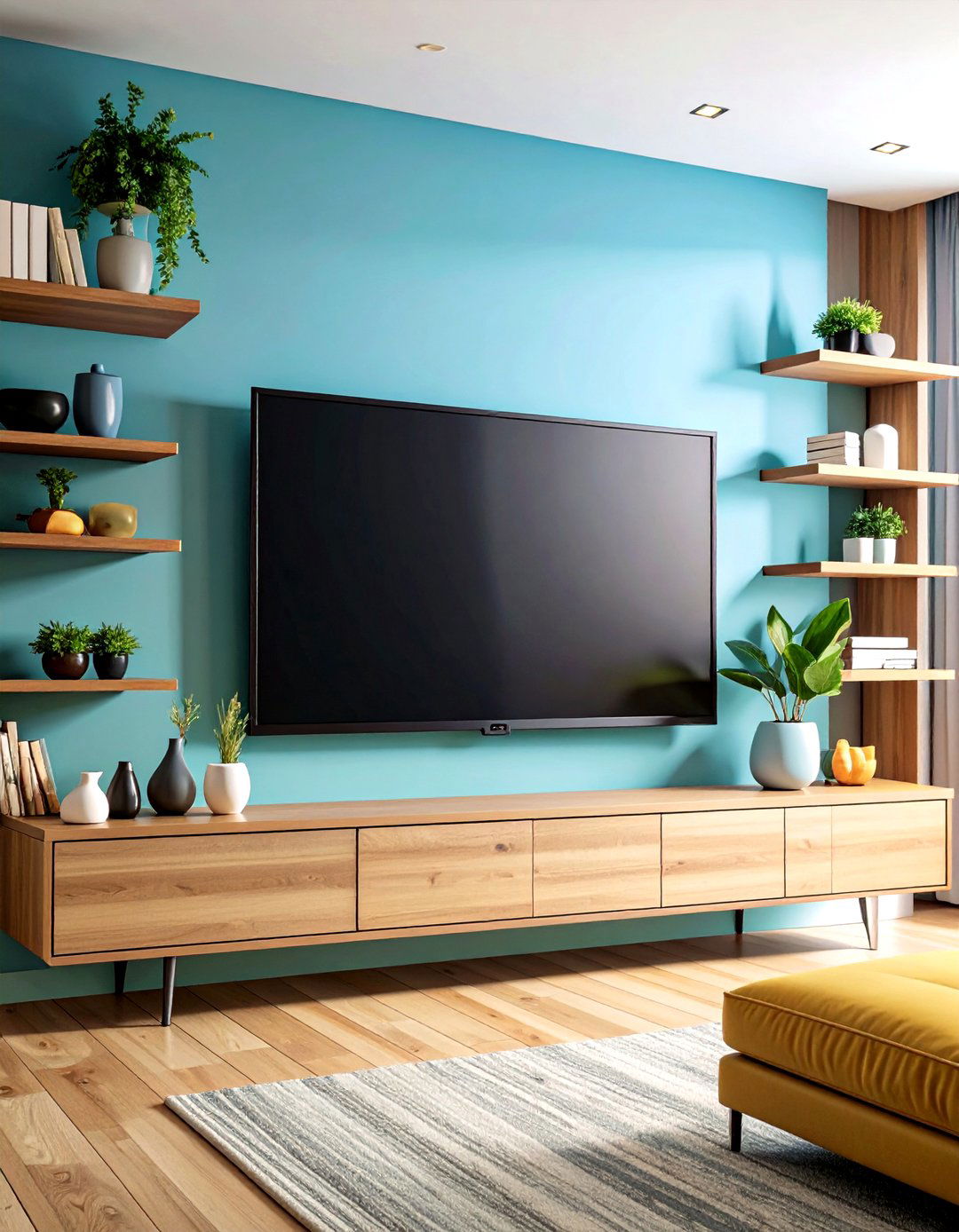
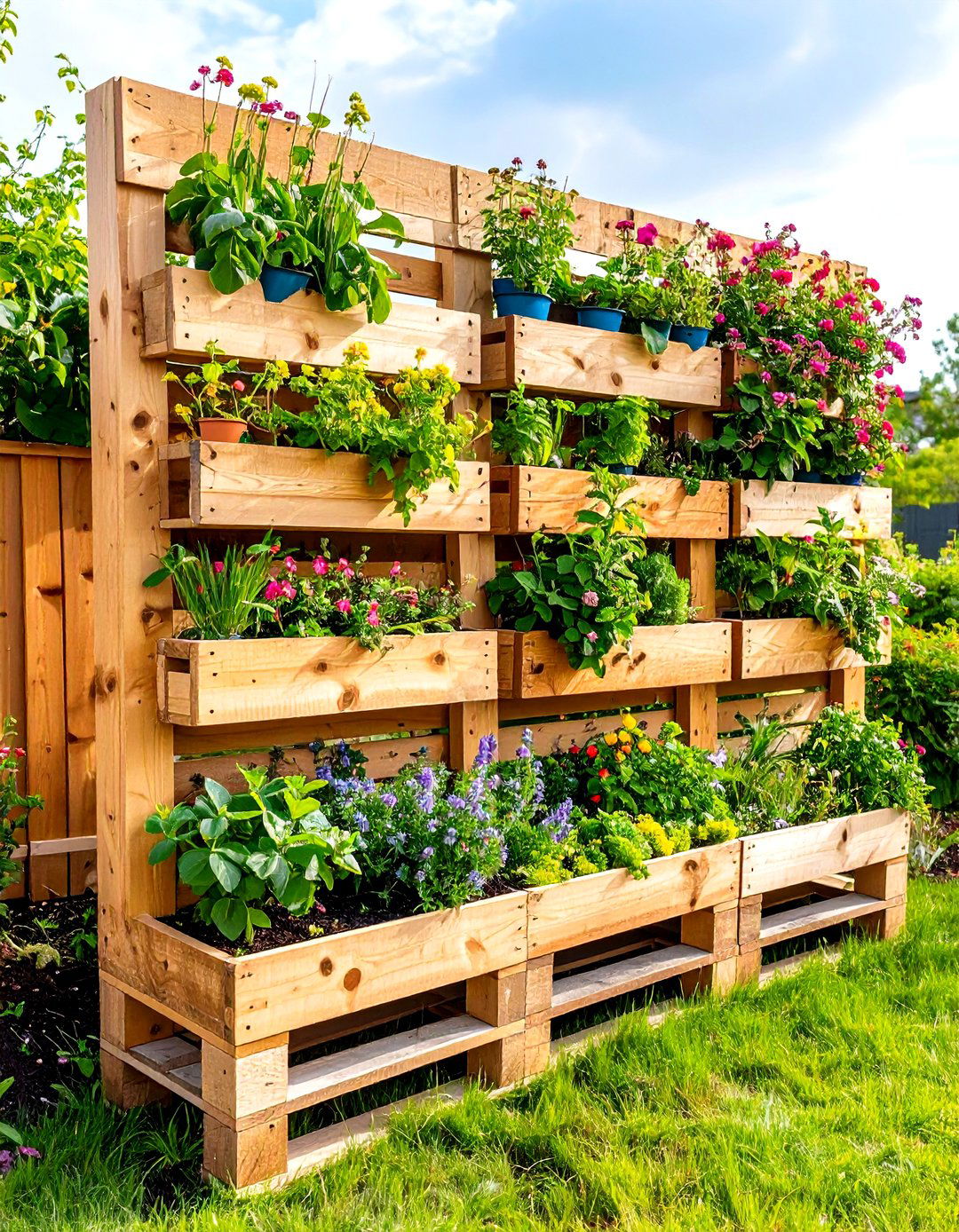

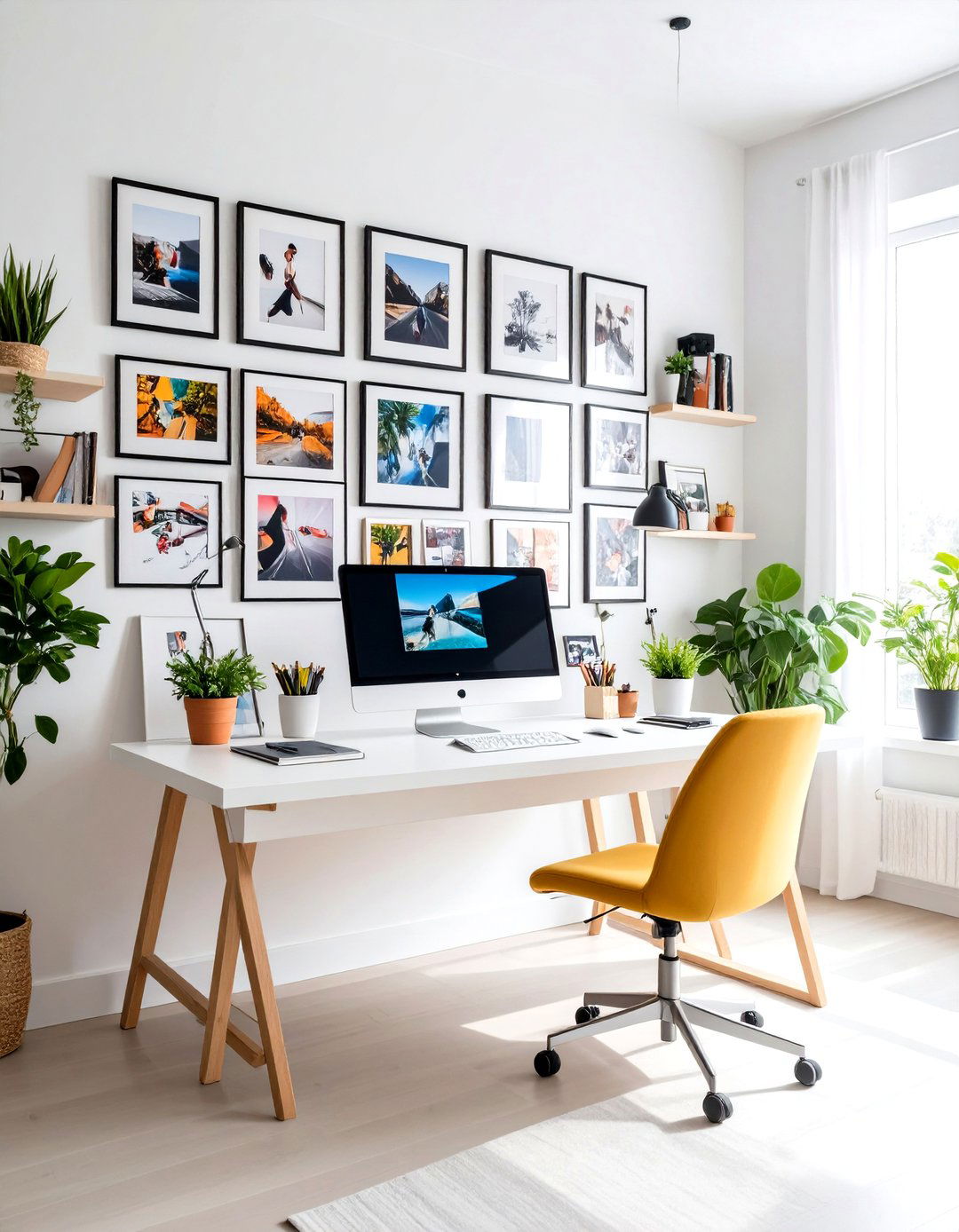


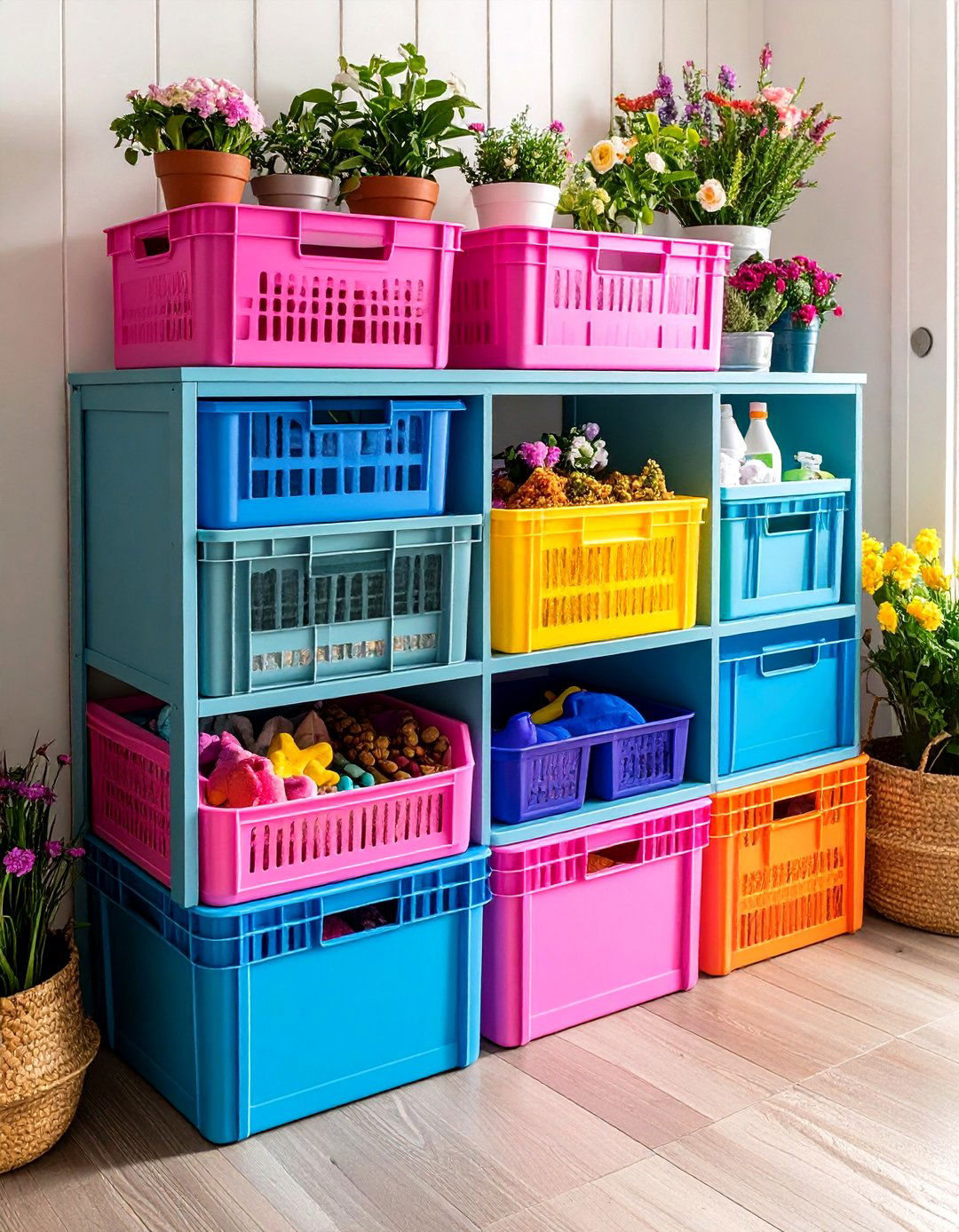
Leave a Reply